And check out the colors it’s sporting…
Local Motors just rolled another Rally Fighter off the production line for an employee of one the most innovative companies I have ever seen; Crye Precision. Look for it at SHOT Show.
And check out the colors it’s sporting…
Local Motors just rolled another Rally Fighter off the production line for an employee of one the most innovative companies I have ever seen; Crye Precision. Look for it at SHOT Show.
After several delays, the Army has chosen four finalists in their Army Camouflage Improvement Effort. The Army conducted an exhaustive down select using a picture-in-picture technique with 900 Soldiers viewing the patterns in 45 environments. There was a candidate pool of around 20 families of patterns each sharing common pattern geometries but with individual colorways for Woodland, Desert, and Transitional environments with a possible fourth pattern for Organizational Clothing and Individual Equipment. This optional OCIE pattern would blend in with the other patterns so that separate sets of PPE would not have to be purchased to match each pattern. Some developers satisfied this requirement with their Transitional pattern.
The finalists are:
ADS Inc as Prime, partnered with Guy Cramer
Brookwood Companies
Crye Precision
Kryptek
(Please note that the contract award figures are ceiling amounts. Total funds will not be awarded unless all contract options are enacted. The disparity in award amounts is driven by offeror bids and is for the total non-exclusive Government license if the vendor is selected and optioned as the new Army camouflage provider.)
Additionally, there will be an Army developed family of patterns entering the field trials which should commence in about 6 months according to the plans overall timeline which has already slipped several times.
This next set of testing will include blending tests, probability of detection, and a live Developmental Test with an Operational Test flair. This latter event will put the patterns through their paces with squad size elements pitted against multiple observers from numerous points of view. Another interesting aspect of this testing is that the Army will also assess how long it takes for an observer to reacquire a test subject after he takes cover and comes back into view. During the industry day, there was an indication that they may also assess the pattern’s performance in both dry and wet conditions. This was a major issue during the development of the AOR patterns so we hope they integrate it into the test plan.
We’ve also heard that the candidate patterns may also be evaluated using OCP (MultiCam) PPE since the Army has made such a large investment in this equipment and it may well have to continue to serve, at least with some units as long it remains serviceable. The interest is to see if OCP equipment can be effectively used in conjunction with the new patterns. Testing of varied PPE against unmatched uniforms in Afghanistan indicated that the contrast can be so great as to work against the camouflage effect.
After the testing ends, a finalized report will be presented to the Army leadership for action. Based on a variety of factors, they will decide how the Army will be camouflaged in the foreseeable future. We also hope that the other services consider the investment the Army has made in this process and make this a joint effort.
SSD applauds the selectees and the Army’s PEO Soldier and RDT&E community for taking on this herculean effort.
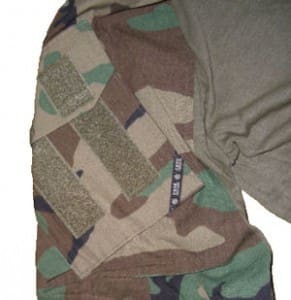 Earlier this year, Marine Corps Special Operations Command purchased Fire Resistant Operational Gear uniforms in the old Woodland camouflage pattern under a sole source contract from Crye Precision. Interestingly, the old Woodland pattern was specified so that MARSOC personnel would blend in with their Afghan (ANA Commandos) counterparts.
Earlier this year, Marine Corps Special Operations Command purchased Fire Resistant Operational Gear uniforms in the old Woodland camouflage pattern under a sole source contract from Crye Precision. Interestingly, the old Woodland pattern was specified so that MARSOC personnel would blend in with their Afghan (ANA Commandos) counterparts.
Unfortunately, MARSOC asked for the uniforms in an older variant of the FR Defender-M fabric. A little over a year ago, the Marine Corps had adopted an improved version of TenCate’s Defender-M fabric for their FROG ensembles that is more abrasion resistant and the US Army followed suit soon after. We’re still unsure why MARSOC didn’t specify the newer Defender-M from jump street but by late summer KitUp! had broken the story that the special versions of FROG were falling apart. Around the same time, a similar fate befell Australian MultiCam uniforms called Operational Combat Uniforms which also relied on the older fabric.
Since then, both MARSOC and the Australians have purchased new uniforms in the latest, more robust 6.5 oz version of Defender-M which boasts twice the tear strength of the previous variant.
One category where the GoPro HERO series of cameras excels is in their wide variety of mounting options, which includes the GoPro NVG Mount. With it, one can easily attach either the HERO or HERO2 to any helmet with a Night Vision mounting plate, allowing them to record excellent footage without installing any additional mounts on their equipment. Here, you can see it mounted to a Crye Precision AirFrame Helmet with an Ops-Core VAS Shroud.
This article originated on Tactical Fanboy
Australia is purchasing an additional 10,000 Operational Combat Uniforms. These “test” items will be manufactured from TenCate’s 6.5 oz Defender M fabric. This is the improved fabric used by the US Army and Marine Corps rather than than the earlier fabric used in the first run of ODUs. The ODU is essentially a Crye Precision combat uniform. Apparently, someone at Department of Defence has determined that there is a need for FR protection for the Australian Soldier.
Photo: ABIS Jo Dilorenzo, 1st Joint Public Affairs Unit, Australia DoD
Here is an example of the Army Combat Pant in the Operation Enduring Freedom Camouflage Pattern (MultiCam). New readers should check out the article we posted earlier this month on the Propper variant of the ACP.
As you can see they integrate the patented Crye Precision knee pad. Crye has this IP locked up pretty tight with not only the knee pad but also how it integrates into the trouser.
Security Scholar, an Australian defense blog has been keeping tabs on the Australian adoption of Crye Precision’s technology in the form of uniform designs (Operational Combat Uniform) and the adaption of the MultiCam pattern for their use in a similar fashion to the British Multi Terrain Pattern. As you will recall, MTP is a melding of Crye’s technology with the long-serving Woodland Disruptive Pattern Material design.
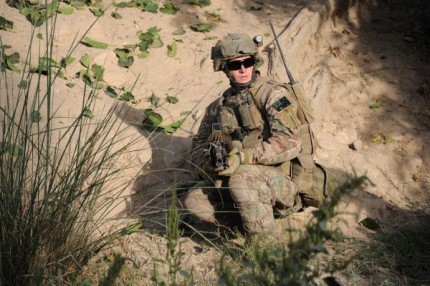
Photo: Commonwealth of Australia, 1st Joint Public Affairs Unit, PO Damian Pawlenko
We can verify that the new Australian MultiCam Pattern will, just like the original use 7 layers of color and that Black is not one of them. Testing has shown these colors to work well in the homeland.
Last month, the Crye issue became politicized in Australia when the opposition party tried to make so much hay out of reports from troops deployed in Afghanistan that their OCUs were falling apart. One politico even went so far as to make the outrageous claim that if the uniforms had been manufactured by an Australian company rather than an American one they would not have been “shoddy.” While the intent was ridiculous, he may have been right considering that, previous uniforms were not FR at all. Now, for the first time, Australian ground troops have FR protection with the Crye uniforms and are better protected. Unfortunately, that is also the culprit behind the prematurely worn uniforms. It seems, the Australians specified an older blend of TenCate’s Defender-M fabric. A newer version with twice the tear strength has been in use by the US Marine Corps for well over a year and for the last few months by the US Army. Hopefully, the Australians will transition to the new fabric. However, according to the Security Scholar report, “Army Headquarters has tasked the Defence Science and Technology Organisation to analyse the use of flame retardant materials in combat uniforms to determine if there is an operational need for these types of fabrics.” At this point, the Australians aren’t even sure if they want their troops to have FR protection.
Read the securityscholar.wordpress.com report to learn more.
The Ground Panoramic Night Vision Goggle 18 from L3 Warrior Systems‘ Insight Technology division are a modification of the Panoramic goggles originally developed to provide Aviators with a wider field of view. Legacy night vision binocular systems with their 18mm tubes offer a 45 deg FOV while the Panoramic model’s four smaller tubes (16mm) increase that out to 95 deg.
Above you can see the GPNVG18 in Blue Force Gear’s AUSA booth. It is mounted on a Crye Precision AirFrame Helmet with an Adams Industries ANVIS mount.
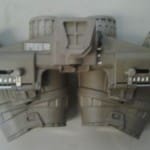
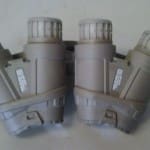
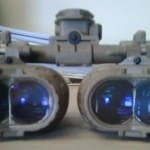
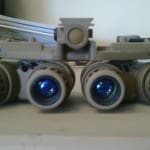
Click on these photos to enlarge them.
If you’re wondering, yes the GPNVG18 uses a separate battery pack. Remember, it was originally designed for Aviation use so it’s much like ANVIS technology.
Here is the complete kit all snuggled in a nice, padded storage case with removable hard case for the goggle.
There aren’t a lot of these systems out there yet, but they are there. Hopefully, we’ll see more. However, the Aviation folks are already looking at new helmet technology that eliminates night vision goggles altogether but rather puts a panoramic screen in front of the eyes of the Aviator and projects data normally found on a Heads Up Display as well as images taken from night vision cameras on the side of the helmet as well as other locations.